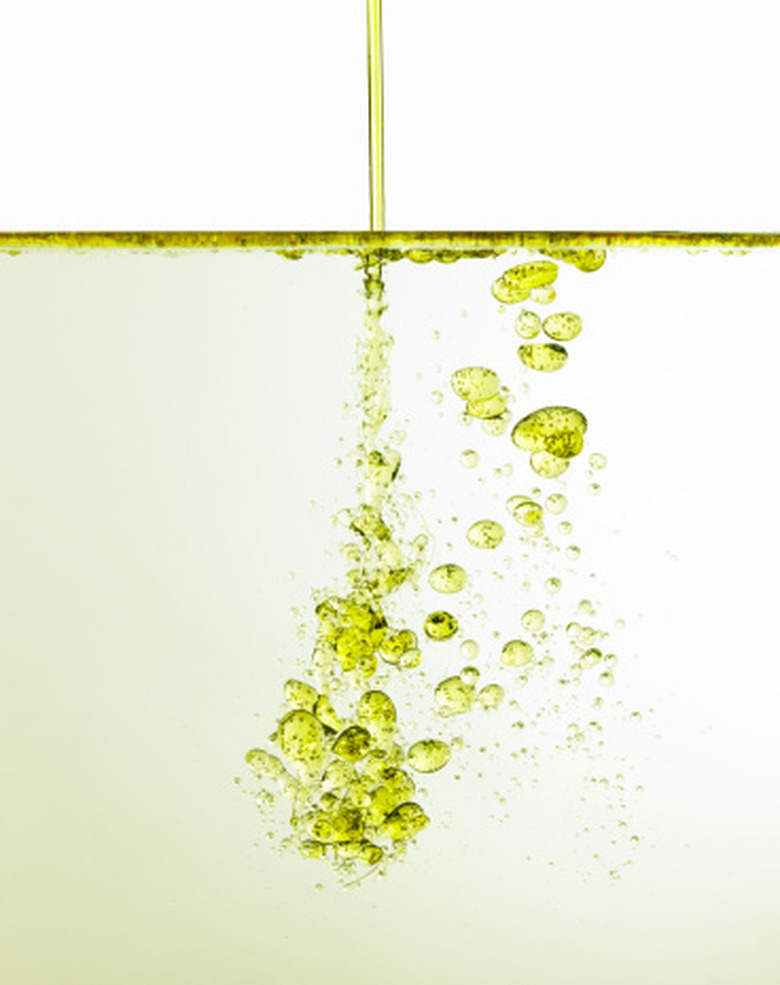What Are The Atoms That Make Up Lipids?
All lipids are made up of the same atoms: carbon (C), hydrogen (H) and oxygen (O). Lipids contain the same elements that make up carbohydrates but in different proportions. Lipids have a large proportion of carbon and hydrogen bonds and a small proportion of oxygen atoms. Although the structures of different lipids vary slightly, the large amount of C-H bonds means that all lipids are extremely energy-rich.
Properties of Lipids
Properties of Lipids
Lipids are amphipathic. This means that the molecules have a soluble part and an insoluble part and are, therefore, nonpolar and usually do not mix well with polar substances, such as water. While the hydrophobic, insoluble parts group together, the hydrophilic parts, which have an affinity for water, stick out and form cell membranes. Types of lipids include fats, waxes, oils and steroids. Lipids also make up a significant part of the body, forming a large part of cell membranes. They have the ability to store and create energy for cells when metabolized.
Fatty Acids
Fatty Acids
Forms of lipids known as fatty acids typically have an even number of carbon atoms, usually between 12 and 24. If a fatty acid has no double bonds between its carbon atoms, it is saturated. Saturated fats contain the maximum possible number of hydrogen atoms.
A naturally occurring unsaturated fatty acid has between one and six double bonds between carbon atoms. Each of these double bonds are separated by two or more single bonds. These types of bonds between atoms prevent the molecules from packing, lowering the melting point.
Phospholipids
Phospholipids
Phospholipids are types of lipids that are soluble in both oil and water. This is possible because the fatty acids' hydrocarbon tails are hydrophobic, like most lipids. The phosphate group that attaches to two fatty acids in the place of a usual third fatty acid, however, is hydrophilic, due to the oxygen atoms that have many pairs of unshared electrons. Substances that are soluble in oil and water, such as lecithin, are known as emulsifying agents. Phospholipids also play an important role in the body. Because they are able to form lipid bi-layers, phospholipids are a major component of cell membranes.
Isoprene-Based Lipids
Isoprene-Based Lipids
A type of lipid that is based on isoprene, a branched five-carbon structure, is often used in medicines, perfumes and spices. The steam distillation of plant material led to the identification of isoprene. The extracts from this process became known as essential oils. Many molecular structures contain fused isoprene monomers. These include steroids, such as cholesterol, estrogen and testosterone.
Cite This Article
MLA
Ames, Hayley. "What Are The Atoms That Make Up Lipids?" sciencing.com, https://www.sciencing.com/atoms-make-up-lipids-7992979/. 24 April 2017.
APA
Ames, Hayley. (2017, April 24). What Are The Atoms That Make Up Lipids?. sciencing.com. Retrieved from https://www.sciencing.com/atoms-make-up-lipids-7992979/
Chicago
Ames, Hayley. What Are The Atoms That Make Up Lipids? last modified March 24, 2022. https://www.sciencing.com/atoms-make-up-lipids-7992979/
